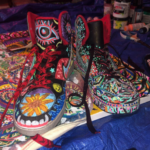Become a Fashion Influencer (Even with No Money): Step-by-Step Playbook for 2025

Start Here: Yes, You Can Build a Fashion Influencer Career with No Money
You can start with a phone, natural light, and a focused plan. The core is choosing a clear niche, posting consistently, engaging your audience, and treating your creator work like a business. Authoritative guides stress niche focus, platform fit, quality content, and steady audience growth [1] . A structured, businesslike approach-brand, tools, pricing, and simple processes-helps you grow and monetize faster [2] . Consistency and analytics-driven iteration are recurring best practices across expert playbooks [3] .
Step 1: Define Your Niche and Signature Style
Fashion is broad. Narrowing your focus makes you memorable and easier to discover. Examples: thrifted and upcycled looks, petite capsule wardrobes, modest officewear under $100, streetwear on a budget, plus-size minimalism, or sustainable vintage styling. Industry guides recommend niche specialization to stand out and attract the right audience for your style and tips [1] . If you’re starting with no money, choose niches that allow creative styling using what you own, secondhand pieces, swaps, or re-wears to demonstrate value without high spend.

Source: influencermarketinghub.com
How to implement (no budget): Write a one-sentence positioning statement: “I help [audience] style [niche] with [approach].” Build a 20-post content map around that sentence (10 outfits, 5 how-tos, 5 tips/trends). Focus each post on solving a specific audience problem.
Example:
“I help college students build versatile outfits from thrift finds.” Post series: “Thrift Flip Thursdays,” “$30 Weekend Fits,” and “5 Ways to Rewear a Denim Jacket.”
Step 2: Choose Platforms and Set a Consistent Cadence
Pick one primary platform (Instagram or TikTok) and one support platform (YouTube Shorts or Pinterest) so you can stay consistent. Expert advice highlights platform fit and consistent posting as central to growth, including frequent Stories/Reels and steady engagement [3] . Aim to post several times per week and use daily lightweight touchpoints (Stories, comments) to stay visible [3] .
How to implement (no budget): Batch-shoot outfits on weekends using your phone and window light. Schedule 3-4 feed posts per week and daily Stories with polls, Q&A, and behind-the-scenes. Repurpose vertical videos across Reels, TikTok, and Shorts to maximize reach per shoot [3] .
Example:
Record three 30-second Reels in one session: “3 ways to style a white tee,” “Thrift haul try-on,” and “Outfit formula for job interviews.”

Source: influencermarketinghub.com
Step 3: Create Quality, Relatable Content with Simple Tools
Quality and authenticity win. Industry guidance emphasizes sharp visuals, clear audio, good lighting, relatable storytelling, and consistent publishing to build trust and reputation [4] . You do not need expensive gear to start-natural light and a phone can be enough if you plan scenes, stabilize shots, and edit tightly.
How to implement (no budget):
- Lighting: Shoot near a window; avoid mixed lighting. Film during golden hour when possible.
- Stability: Use a stack of books or a DIY tripod. Clean your lens before shooting.
- Editing: Use built-in app editors; free tools like Canva can help with simple graphics and cover images [2] .
- Storytelling: Start with a hook in the first 2-3 seconds: “Zero-spend interview outfit from my closet.”
- Captions: Offer value-bullet tips, item lists, styling logic, and a question to prompt comments.
Example:
A Reel titled “One blazer, five outfits for work” with on-screen text, clear cuts, and a caption listing each look.
Step 4: Optimize Your Profile Like a Brand
Set a clean profile photo, niche-forward bio, and a link hub for your key destinations. Expert guides recommend a professional profile and keyword-rich bio to position your account clearly for followers and brands [1] . Treat this like a storefront: what you do, who it’s for, and what to follow you for.
How to implement (no budget): Use a bright headshot or full outfit photo. Write a bio with niche keywords and a clear value promise. Use free link-in-bio tools (some platforms offer native link stickers) to route to your best content or future shop pages. Coursera’s guidance on creator fundamentals also suggests simple tool stacks like Canva or link hubs to streamline content and calls to action [2] .
Example bio:
“Sustainable thrift styling | Petite officewear on a budget | New Reels weekly ✨”
Step 5: Grow Your Audience with Outreach and Community
Growth comes from value, visibility, and relationships. Recommendations include engaging in comments and DMs, networking with other creators, joining communities, and attending local fashion events when feasible [3] . Collaborations expand reach and social proof.
How to implement (no budget):
- Daily 15-minute engagement: Comment thoughtfully on posts in your niche and reply to all DMs.
- Micro-collabs: Do Reel swaps or outfit challenges with creators near your size/following.
- Community: Search for “fashion creator Discord,” “influencer Facebook groups,” or local thrift groups to find challenge threads and collab partners [3] .
- Hashtag and SEO: Use niche-specific hashtags and descriptive keywords in captions to improve discoverability.
Example:
Run a monthly “5×5 Closet Remix Challenge” with three micro-influencers; each tags the others to cross-pollinate audiences.
Step 6: Track What Works and Iterate
Creators who learn from performance generally grow faster. Expert tips include reviewing analytics to see which posts drive reach and engagement, then making more of what resonates [3] . Treat content like experiments: vary hooks, lengths, formats, and topics.
How to implement (no budget): Each week, log top 3 posts by watch time, saves, and comments. Identify patterns-e.g., “before/after styling” outperforms “long-form hauls.” Repeat proven formats with new items or angles.
Example:
If “3 ways to style thrifted trousers” gets the most saves, produce a series on different staples: skirts, blazers, denim, sneakers.
Step 7: Monetize Smartly (Even Before You’re “Big”)
Income streams may include affiliate links, brand collaborations, UGC (user-generated content) for brands, styling services, digital products (lookbooks), and ad revenue on eligible platforms. Approach this like a business: define offers, track deliverables, and use basic payment processes. Business-minded setup-clear offerings, basic pricing, and payment tools-can make early deals smoother [2] .
How to implement (no budget): Start with UGC: pitch brands to create content for their channels (no posting requirement on yours). Offer a “3-video package” filmed on your phone with natural light. For affiliates, consider well-known retailer programs you can search for by name; verify terms and approval criteria before applying. Keep expectations realistic; programs and rates vary.
Example outreach script:
“Hi [Brand], I create vertical styling videos for [niche]. I can produce 3 short-form videos showcasing [product category] with clean natural light and on-body demos. Turnaround 7 days. If helpful, I’ll include fit notes and caption copy. May I send examples?”
Step 8: Pitch Brands and Build Your Media Kit
Pro creators present themselves clearly: who you reach, what you offer, and example work. Many step-by-step guides emphasize the value of professional positioning and authentic content when collaborating with brands [4] . A basic media kit helps even at smaller sizes if your content quality and niche fit are strong.
How to implement (no budget): Use free templates (e.g., design your own visuals) to assemble a one-pager: bio, niche, audience demographics (from platform insights), top content screenshots, and package ideas (UGC, try-ons, lookbooks). Track inbound inquiries and responses in a simple spreadsheet. When in doubt, ask brands for their brief and usage needs to price appropriately.
Example packages:
“1 Reel + 3 Story frames” or “UGC only: 2 product demos for paid ads usage (30 days).”
Step 9: Stay Consistent, Trend-Aware, and Authentic
Fashion and social platforms shift quickly. Best practices include evolving with trends, testing formats like GRWM, outfit transformations, and styling reels, and consistently refining your schedule [3] . Keep your unique point of view front and center-audiences return for your taste and clarity, not just products.
How to implement (no budget): Maintain a simple weekly ritual: trend scan (15 minutes), batch filming (60-90 minutes), edit and schedule (60 minutes), engage daily (15 minutes), analyze weekly (20 minutes). Protect your aesthetic while borrowing trend mechanics (sound, pacing).
Challenge and solution:
If you feel pressure to buy new pieces, focus on “rewear challenges,” swaps with friends, or styling the same item across occasions to demonstrate creativity without spend.
No-Money Toolkit: Free or Low-Cost Systems
You can assemble an effective workflow using free tools and built-in platform features. Creator education suggests basic tools like simple graphics and link hubs to streamline publishing and calls-to-action without heavy investment [2] . Over time, you may choose to upgrade lighting or microphones as budget allows, but it’s not required to begin.
- Planning: Notes app or spreadsheets for content calendars and checklists.
- Scripting: Write 1-2 sentence hooks and shot lists to speed filming.
- Filming: Phone + window light; stabilize with books or a shelf.
- Editing: Native tools or free apps; export vertical 9:16 for Reels/TikTok/Shorts.
- Publishing: Batch and schedule; maintain 3-4 posts/week + daily Stories cadence [3] .
- Branding: DIY logo/cover frames; consistent color accents in text overlays.
- Business basics: Outline simple rates and packages; use secure payment platforms you already have access to, and request written briefs before work begins [2] .
Common Pitfalls and How to Avoid Them
Buying followers: Avoid. It hurts reach and brand trust. Focus on value and engagement.
Inconsistent posting: Batch content and use a fixed schedule supported by daily light touches [3] .
Over-spending on gear: Start with what you have; improve lighting and editing fundamentals first [4] .
Generic content: Lead with a specific niche and strong hooks; tutorial-style and transformation content tends to earn saves and shares [1] .
Action Plan: Your First 30 Days
Week 1: Define niche and positioning; draft 20 content ideas; shoot 6 videos and 10 photos. Set bio and link hub [1] .
Week 2: Publish 3-4 posts; daily Stories; comment for 15 minutes/day; test two hooks. Start a simple analytics log [3] .
Week 3: Repurpose top-performing format into two new posts; start one micro-collab; draft a one-page media kit [4] .
Week 4: Pitch two brands with a UGC offer; refine schedule based on analytics; plan a monthly challenge to anchor ongoing engagement [2] .
When to Scale
Scale when you have a repeatable content format, steady posting rhythm, and clear signals from analytics (saves, watch time, inbound inquiries). At that point, consider modest upgrades like a ring light or a lav mic, and explore additional platforms one at a time for diversification [3] .
References
[1] Influencer Marketing Hub (2024). How to Become a Successful Fashion Influencer in Today’s World.
[2] Coursera (2025). How to Become an Influencer in 11 Steps: Your 2025 Guide.
[3] Afluencer (2025). 7 Ways to Kickstart Your Career as a Fashion Influencer in 2025.
[4] Growth Folks (2025). How to Become a Fashion Influencer in 2025: Step-by-Step Guide.






